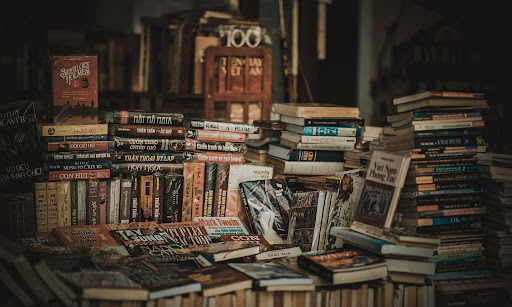Have you ever paused mid-book and wondered, what is fiction and non-nonfiction? It’s more than “made-up versus real.” It’s a line that shapes how we read, learn, escape, and grow. In this post, we’ll chat about those two big worlds, fiction and nonfiction, define them simply, peek at different types, explore where they overlap, and show why recognizing the difference can help us both as readers and storytellers.
Understanding Fiction
Let’s start with fiction. Fiction is a world built from imagination. If you see strange lands, made-up characters, and plots that don’t actually happen, congratulations, that’s fiction. Novelists guide us through adventures that let our minds wander. We get to feel like we’re living another life for a while.
Fiction isn’t just games and flights of fancy. A well-crafted fictional story can settle deep emotions in us. Think of stories set in real places but spun into new events. They feel grounded, but the author still exercises creative freedom. And historical fiction? That’s when real events get woven into imaginary characters. So you get a sense of the past but within a fresh, personal story.
Why read fiction? For many reasons. Studies show that reading fictional stories, especially literary fiction, boosts empathy. We connect with others’ feelings, perspectives, and subtle social experiences. Fiction lets us walk in a character’s shoes and understand their joys, fears, or sorrows. Through stories, our ability to recognize emotions in others improves, like a training ground for social awareness.
Understanding Nonfiction
On the flip side is nonfiction: the world of truth, facts, and real events. Nonfiction doesn’t invent, it reports. You encounter it in biographies, history books, science writing, self-help, journalism, and more. The goal is often to inform, explain, or persuade, based on evidence or real-life experiences.
The strength of nonfiction is its credibility. When you pick up a book about world history or a memoir from someone’s toughest year, you’re tapping into actual lived events. That can build trust. And while fiction tugs on emotions, nonfiction often expands our knowledge, teaching us, challenging assumptions, or offering new ways to view the world.
If fiction grows empathy, nonfiction sharpens the mind. It encourages research, critical thinking, and questioning. Nonfiction writers often arrange content chronologically or logically, building coherent arguments or narratives. You learn to separate fact from opinion, analyze sources, and form a clear understanding based on evidence.
What Happens in Fiction and Non-Fiction
Now, what happens when fiction and nonfiction intersect? Enter creative nonfiction. Writers take real events but present them with literary techniques, story arcs, vivid scenes, and character development. This blurs the line. You get a factual foundation, told with dramatic flair.
Creative nonfiction includes memoirs that feel like novels, travel writing that reads like adventure stories, and narrative history that dives into the emotions behind events. It’s appealing because it educates, but doesn’t feel dry. Traditional nonfiction can be factual and still feel alive when told well; creative nonfiction just leans into that storytelling edge.
This blending helps fill gaps in learning. Maybe pure fiction fails to teach real-world context. Maybe raw nonfiction lacks an emotional sheen. Mixed works offer both. They give you a true story that still reads like a compelling narrative.
Why Understanding Why Fiction and Nonfiction Matters
Now that we see the two sides, why does it matter to know the difference?
First, as readers. Knowing what you’re picking up helps you get what you expect. Want to learn about climate science? Reach for nonfiction. Craving emotional escape? Reach for fiction.
Second, as writers. Each genre has its own tools. Fiction uses plot, conflict, and character growth. Nonfiction uses structure, evidence, and clarity. Blended writing asks writers to be both factual and engaging.
Third, in daily life. We see stories on social media, news, and even ads claiming to be factual. But knowing the difference between fiction and nonfiction helps us stay critical. We’re less likely to mistake an invented narrative for real events.
Lastly, for personal growth. Reading more widely, mixing fiction and nonfiction, has a multiplying effect. Fiction builds empathy and imagination. Nonfiction builds knowledge and critical thinking. Together, they help us learn to speak, think, feel, and care.
Examples to Bring It to Life
Picture these pairs. Fictionally imagining life in space? That’s fiction. But if you pick up a book about real space missions, that’s nonfiction. Read a novel about a journalist during the war. Fiction. Read a war reporter’s diaries? Nonfiction. Read a memoir told with a novel-like structure. That’s creative nonfiction, where both worlds touch.
Or consider 1984 by George Orwell. It’s fiction but explores real social themes. Then Sapiens by Yuval Noah Harari is nonfiction with big-picture narrative flair. Both teach us something, one through story, the other through analysis.
How to Choose and Switch Between Fiction And Non-fiction?
If you’re reading one type too much, try the other. Debating a fiction-only diet? Try starting with nonfiction on a topic that interests you, history, true crime, or memoir. Want more emotional depth? Slip into fiction that explores feelings, societies, or moral dilemmas.
Try pairing. Read a historical novel set during the Civil Rights era and then read a nonfiction account of those events. Or start with a memoir and then dive into related novels. This combo gives context and makes things stick emotionally and intellectually.
Final Thoughts
To wrap it all up: fiction and nonfiction serve different purposes, but they complement each other beautifully. Fiction brings imagination, empathy, and creativity. Nonfiction brings facts, knowledge, and structure. And in the meeting ground of creative nonfiction, you get the best of both worlds.
Understanding what is fiction and nonfiction helps you read with intention, write with clarity, and think critically. So next time you pick up a book, think about why it matters, and what you want to get out of it. Mixing them up might be the smartest way to read, and live.



